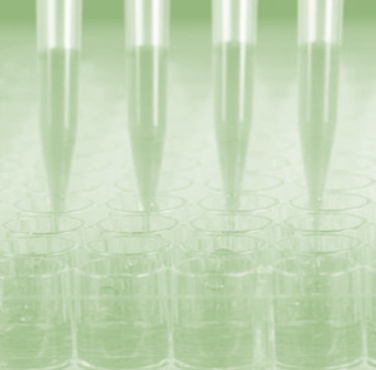
MCF-7 Cell Transfection Kit
An optimized MCF-7 cell line transfection kit, the MCF-7 transfection kit, is available from Altogen Biosystems. The transfection reagent is optimized for MCF-7 cells and enables a high efficiency transfer of miRNA, siRNA or plasmid DNA into MCF-7 cells. The transfection reagent allows either a forward or reverse transfection method in order to achieve at least 90% transfection efficiency.
MCF-7 Culturing Protocol
Complete growth medium must be renewed 2-3 times per week, or as needed according to media pH. Cell confluency should be maintatined between 30-90%. Do not allow cell concentration to exceed 90% confluency or cells will decrease proliferation rates. The doubling time of MCF-7 cells is 30-40 hours.
- The common medium for culturing MCF-7 cells is Eagle’s MEM (EMEM), supplemented with 10% FBS and 1% penicillin/streptomycin, non essential amino acids (0.1 mM), insulin (10 ug/mL) and sodium pyruvate (1 mM). Add 10 nM estrogen to media for a 3-4 x increase in cell population growth. Maintain temperature at 37°C in humidified, concentrated CO2 (5%) atmosphere.
- As MCF-7 cells reach approximately 85-90% confluency, remove media and rinse cells twice with 1x PBS.
- Add 2-3 mL of warm (37°C) 0.25% Trypsin- 0.53 mM EDTA solution to cells to detach the cell layer. Observe cells under an inverted microscope. Dispersal should happen between 5 and 15 minutes. If cells are not detaching properly, place flask back in 37°C incubation chamber. Note: Do not agitate the cells during dispersal, either by hitting or shaking the flask. This will cause clumping as the cells detach.
- Once MCF-7 cell layer is detached, neutralize Trypsin by adding 10mL of complete growth medium to the flask. Suspend cells by gently pipetting.
- Centrifuge for 5 minutes at 125 x g to pellet cells.
- Aspirate trypsin/growth medium suspension from tube.
- Resuspend MCF-7 cell pellet in 10 mL fresh growth medium.
- Plate the correct MCF-7 split ratio volume into a new flask containing complete growth medium and incubate at 37°C in humidified 5% CO2 atmosphere.
MCF-7 Split Ratio: A 1:3 or 1:6 subcultivation ratio is recommended
MCF-7 Cell Viability
Cell viability is the number living cells relative to the total number of cells asd determined by trypan blue exclusion. A non-viable cell has a weakened cell membrane and allows trypan blue to pass through the membrane. Briefly, trypan blue is added to the cell suspension and dead/viable cells are counted on a hemocytometer. The trypan blue stained cells and the total cell population are counted under a microscope. Healthy cells are considered to be a cell suspension with 85-100% viable cells as determined by the following equation:
% viable cells = [ 1 – (number of blue cells/number of total cells) ] * 100
MCF-7 Cryopreservation
MCF-7 cells can be cryopreserved in complete growth medium supplemented with 10% (v/v) DMSO at 1 x 106cells/mL or using a commercially available freezing medium. Store frozen cell vials in the liquid nitrogen vapor phase.
Troubleshooting Subculture Procedures
Low cell viability after cell passage:
- Reduce harsh pipetting during cell collection
- Cells may have been exposed to the dissociation agent for too long
Cells are difficult to detach from flask:
- Use a higher concentration of dissociation reagent
- Incubate the flask containing the dissociation agent at 37°C to increase enzymatic activity
- Ensure the flask was washed with 1x PBS before the addition of dissociation agent; perform two 1x
- PBS washes if needed
Cells form clumps after detachment:
- Cells were centrifuged too hard
Links
Purchase MCF-7 Transfection Reagent
Purchase ATCC Number: HTB-22
General Transfection Information
Biology Transfection Forum
Cell Transfection Products
MCF-7 Cells Culture | MCF-7 Culture Protocol | MCF-7 Transfection Reagent